Eight photos of six species.
I had a pretty good day for birds at Bear River MBR last week. In the last few days I’ve posted photos of three species from that trip – Western Grebes and Yellow-headed and Red-winged Blackbirds. Todays post includes five more species and an additional photo of a Western Grebe.
It’s my intention to keep the narration short. Today’s post is more about documenting what a great place Bear River MBR can be for birds this time of year than it is about outstanding photos and interesting behaviors.
For most of the morning I left my camera settings at f/6.3 and ISO 800 (except for the Eared Grebe photos below) no matter the conditions because I wanted as few variables as possible as I continued to test my recently repaired lens and camera. Doing so gave me some pretty high shutter speeds, even for me.
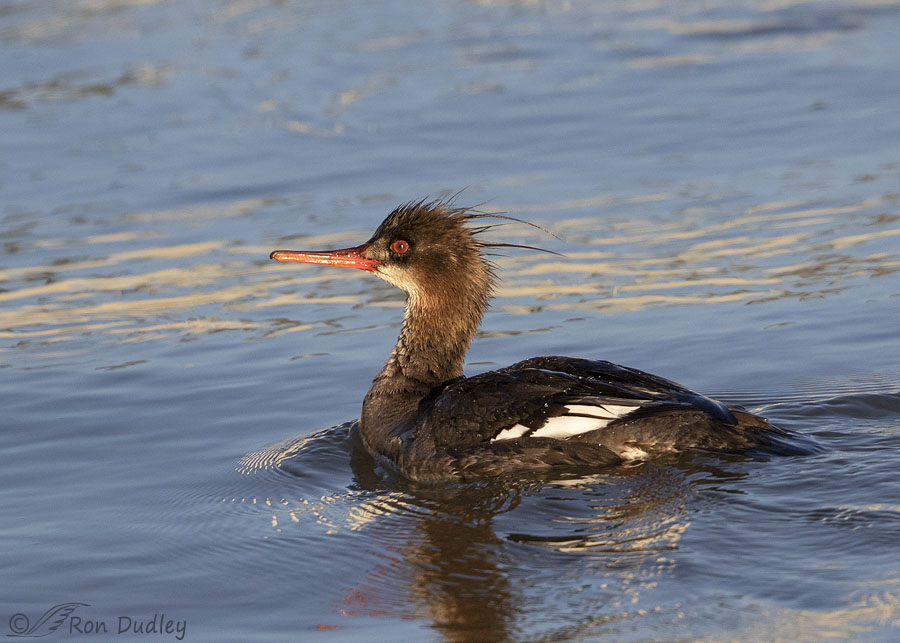
1/3200, f/6.3, ISO 800, Canon 7D Mark II, Canon EF 500mm f/4L IS II USM + EF 1.4 III Extender, not baited, set up or called in
Most mergansers I photograph are Common Mergansers so it was a treat to see a pair of Red-breasted Mergansers that morning. Unlike Common Mergansers they don’t breed here so these two were on their way to Alaska or northern Canada for the breeding season. I believe this was the male of the pair, not yet in breeding plumage, that was traveling together.
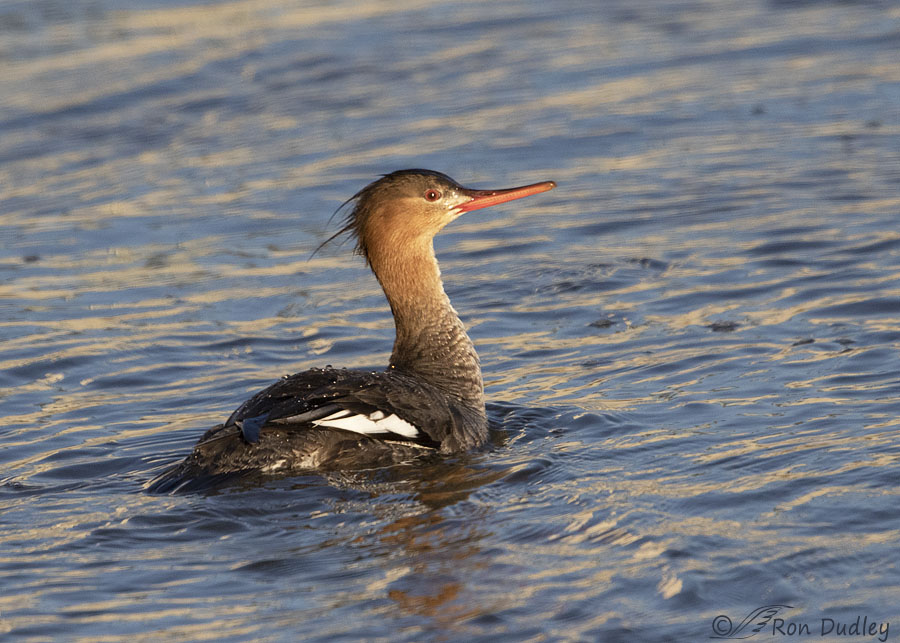
1/4000, f/6.3, ISO 800, Canon 7D Mark II, Canon EF 500mm f/4L IS II USM + EF 1.4 III Extender, not baited, set up or called in
And this was the female. Both birds were Nervous Nellies.
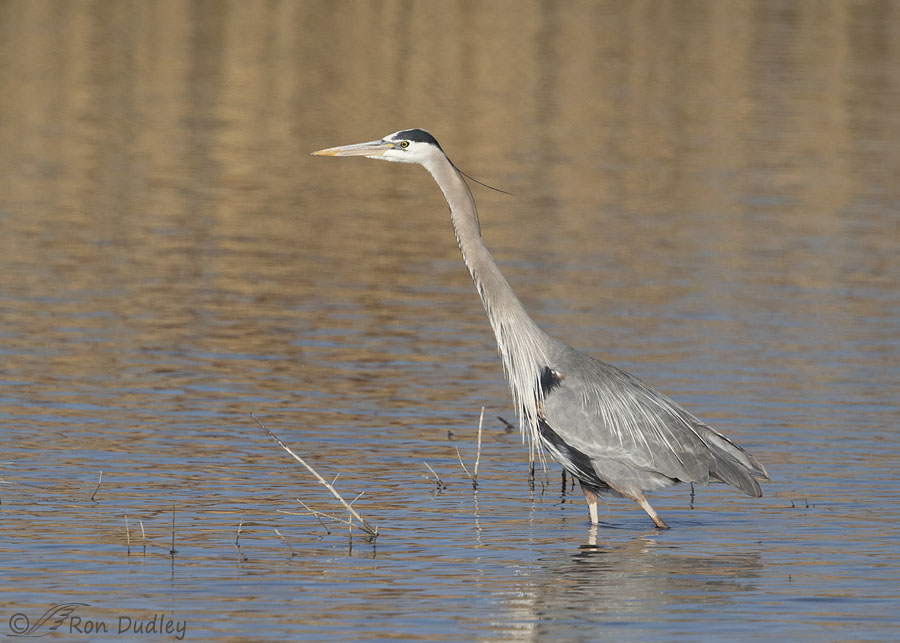
1/6400, f/6.3, ISO 800, Canon 7D Mark II, Canon EF 500mm f/4L IS II USM + EF 1.4 III Extender, not baited, set up or called in
A Great Blue Heron in a classic frozen fishing pose.
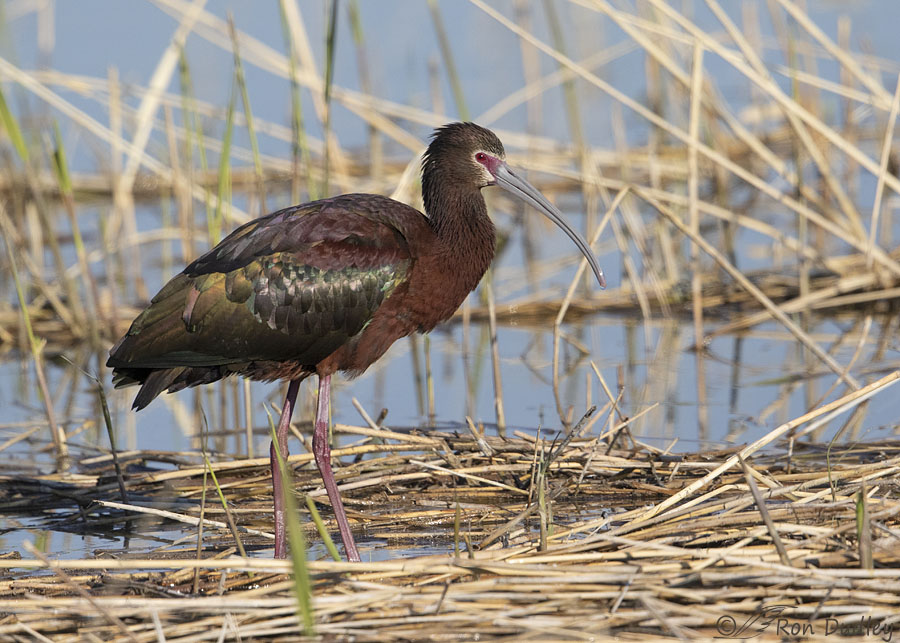
1/4000, f/6.3, ISO 800, Canon 7D Mark II, Canon EF 500mm f/4L IS II USM + EF 1.4 III Extender, not baited, set up or called in
A White-faced Ibis that finally lifted its head from it’s feeding routine. I was disappointed that morning to never get any ibis photos with the bird in an uncluttered and/or more attractive setting.

1/3200, f/6.3, ISO 800, Canon 7D Mark II, Canon EF 500mm f/4L IS II USM + EF 1.4 III Extender, not baited, set up or called in
A male Long-billed Curlew that finally moved away from the dried vegetation and ugly road and into more attractive green grasses. The grass was long enough to completely hide his long legs in many of my photos.
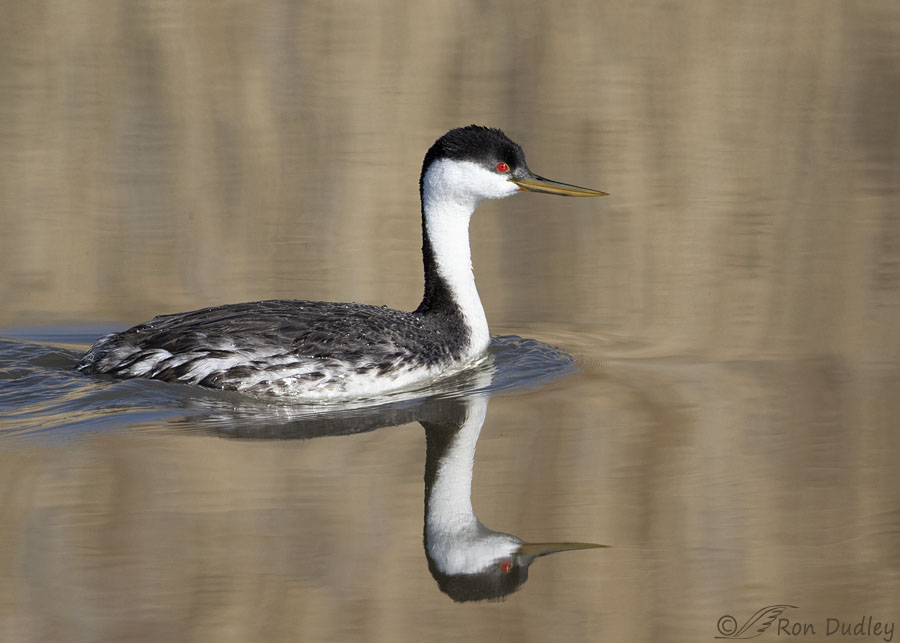
1/4000, f/6.3, ISO 800, Canon 7D Mark II, Canon EF 500mm f/4L IS II USM + EF 1.4 III Extender, not baited, set up or called in
A Western Grebe swimming along one of the canals. I like the photo for its simplicity and for the reflection.
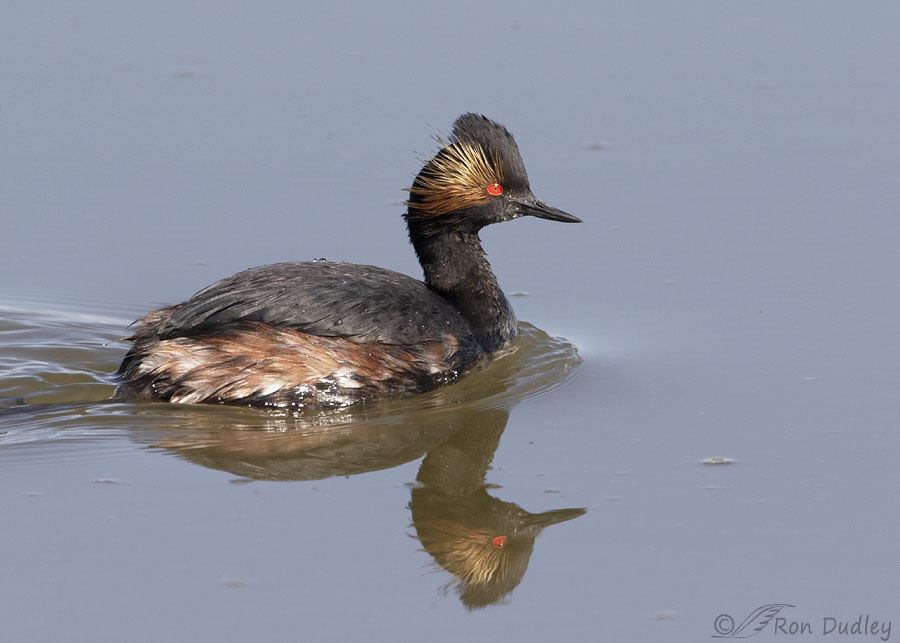
1/1600, f/8, ISO 500, Canon 7D Mark II, Canon EF 500mm f/4L IS II USM + EF 1.4 III Extender, not baited, set up or called in
An Eared Grebe in breeding plumage on the Bear River. I was close to ‘him’ but my shooting angle was steep, usually even steeper than this. He could really scoot as he repeatedly darted across the water after insects floating on the surface..
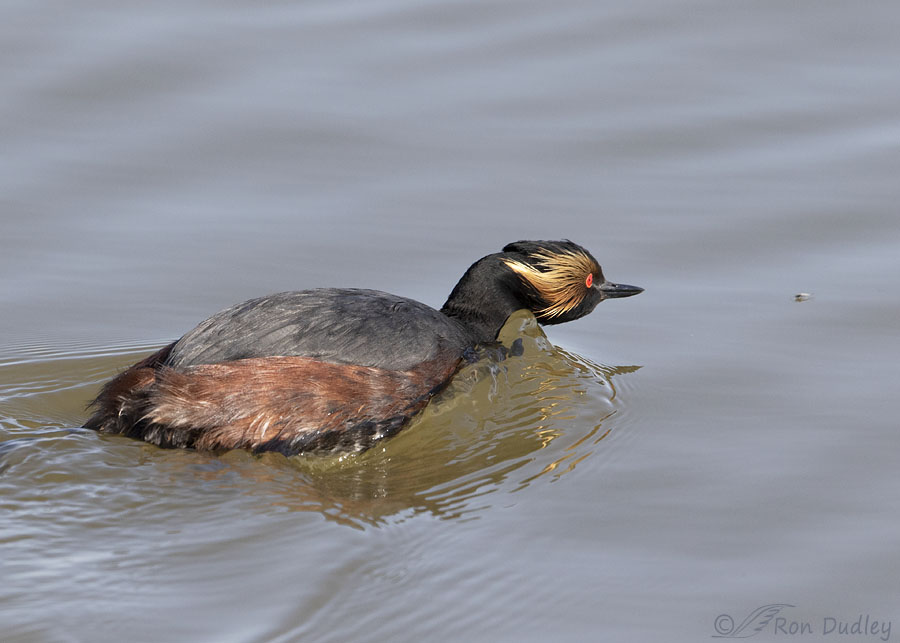
1/1250, f/8, ISO 500, Canon 7D Mark II, Canon EF 500mm f/4L IS II USM + EF 1.4 III Extender, not baited, set up or called in
Here he’s after what is probably a midge on the water directly in front of him. He got it too.
It was a beautiful morning at the refuge, made even better when I arrived home with mostly sharp images from my recently repaired camera and lens. I saw and photographed a variety of other species that morning but few of those photos lived up to my expectations, or at least my hopes.
That’s the way it goes with bird photography.
Ron


Great photography Ron, as always. Makes me want to have my lens checked out.
Question: Your comment ” Doing so gave me some pretty high shutter speeds, even for me.” suggests that you prefer slower speeds when possible. Why don’t you simply keep your camera set at the highest speed for maximum flexibility under all situations? Thanks.
Bob, No, I actually prefer faster shutter speeds than most bird photographers use, which is why I said “even for me”.
But there’s a downside to faster shutter speeds. To get them often requires higher ISO’s which cause a slight but often noticeable degradation of image quality (slightly less detail and more noise).
Half and half: The Red-breasted Merganser, Great Blue Heron, and Western Grebe are common here, the others are rare. All are great close-ups. Interesting that four of the six have red iridae (had to look it up, irises just sounded too easy). I’ll give you a pass this time for not posting the scientific names.
Lyle, believe it or not I thought of you when I left the scientific names out, figuring you might call me on it. There were just too many, especially since search engines don’t like us to use too many tags.
Ooooh. And ahhh.
Thank you.
Thanks, EC.
If and when I finally get to Utah (sometime this year, I hope), BRMBR is on my list to visit (along with HawkWatch). A fantastical collection of water birds here, Ron — I’m really taken with the first shot of the Eared Grebe, not just his fancy ear plumage but that brilliant red eye, even in the reflection! I’m glad your camera and lens are operating to your liking, even if the operator himself doesn’t always do the same.
Chris, when you visit HawkWatch International drop my name to Director Nikki Wayment. It’ll either get you special treatment or get you thrown out of the place… If you can, tell Galileo hi for me.
If you can, tell Galileo hi for me.
I’m amused to see the spiky “bad hair” on the first three.
Good.
They are all beautiful images. Even though grebes are one of my favorite birds I will say I am getting grebed out! I guess with all these windy storms we are getting stranded migrating Eared Grebes in the rehab. I have made three release trips to BRMBR in two weeks (18 birds). I have had fun pulling other birders and bird photographers I run into at the refuge into helping with the releases. I hope they enjoy it. I know they have a love for the refuge and the birds that live and migrate through the wetlands, so while I am there releasing, my hope is to include them into another part of caring for our wild friends and their habitat. I know the debate and I don’t want to get pulled into the ageless battle about rehab not being worth while species wise, but rehab does make a difference to the life of the one bird saved. Wildlife rehab can help humans understand the importance of wildlife and their habitats through engaging people with those individual animals that needed human help. If I can create interest by hands on experience, engaging people in the release, I can create change to protect our wildlife, wetlands and wild habitat. When people interact one on one with a wild animal it is more personal and they care more.
Beautifully (and accurately) said, April! I’d bet those folks who helped you with those releases are still talking about their experiences with their family and friends.

Well said, April. I’ve seen some of the photos you’ve posted on FB of Tana and Wayne and Judy releasing your rehabbed grebes. Good folks all ’round.
Beautiful and fun series, Ron. It IS a busy time of year for all sorts of birds with squabbling over nesting sites and food supply. All are charming and especially like the Eared Grebe going after the midge…..
It IS a busy time of year for all sorts of birds with squabbling over nesting sites and food supply. All are charming and especially like the Eared Grebe going after the midge….. 
Had to pull the suet feeder for the Downey and Hairy Woodpeckers since Red Winged Blackbirds and Grackles also found it tasty.
Pair of GHO’s talking the last few evenings – WAY late for that.
Good to see Dick back!
Judy, I’ve missed having Dick around too. I know it’s been highly frustrating for him.
I’m so glad that you had such a species-filled day; this blog was a real breakfast treat ! That’s the first time I’ve seen a White Faced Ibis–a very interesting
looking bird. Is that green iridescence on the wing a year-round characteristic,
or is that part of a “seasonal attraction” ?
Kris, I believe this species of ibis exhibits some iridescence year round.
A potpourri of Bear River birds – very nice shots and very colorful. The photo of the Long-billed Curlew definitely shows why so named. Love the Eared Grebe’s look of determination as he streaks toward that midge.
Thank you, Everett.
One single morning and all these glorious photos?!! What a fun day for you. The water reflection shots are so crisp. The wake behind the Grebe going for his tasty bug shows how quickly he was moving – again a really sharp shot! What variety!!! Bear River MBR is quite the bird resort
Kathleen. This time of year BRMBR can be a birder’s or bird photographer’s paradise. It’s pretty good up there right now, at least compared to what it’s been like for a while now.
What a terrific variety! You know I love waterfowl photos, and that last photo of the grebe hits is aesthetically pleasing!
Thanks, Shane.
Terrific portfolio! Sharpness certainly was the ‘name of the game’ for you. Love the Eared Grebe strutting his plumage.
Thank you, Kathy. I only see Eared Grebes in breeding plumage for a short time each year.
WOW! What a wonderful set of images. Camera lens success.
Many thanks for sharing.
Thank you, Dick. It almost seems like seeing family after a long absence to have you able to view and comment on my blog again. Hope it lasts.